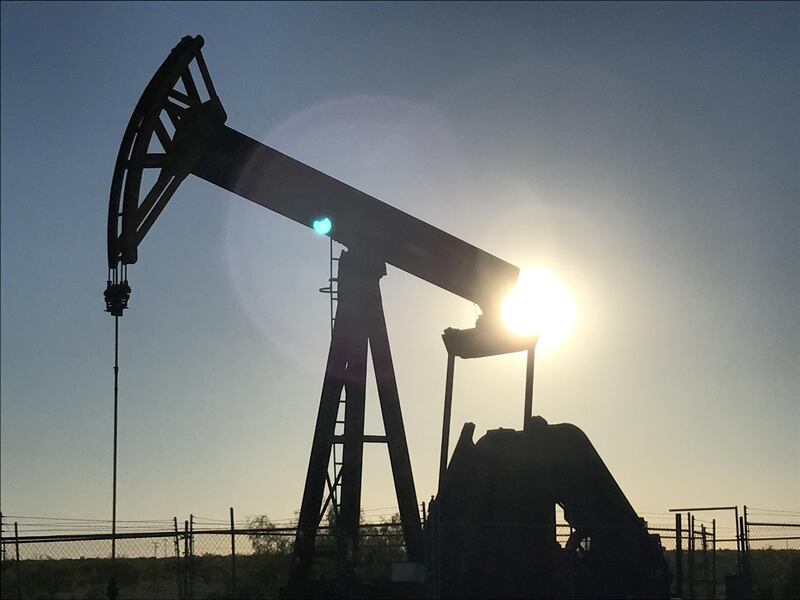Despite bumper earnings from firmer prices, life isn't getting any easier for hydrocarbon producers.
Already under siege to reduce carbon in their long-term business models, Big Oil is still struggling to attract talent and overhaul its male-dominated management structures.
As energy executives prepare to face activist investors at annual general meetings, pressure for faster change seems to be coming from all angles.
With annual meeting season in sight, climate proposals alone from US investor groups are expected to hit a new record of over 90 this year, up from 36 such proposals in 2013, according to ISS Analytics.
At the International Petroleum (IP) Week last month, an annual London gathering of traders and industry executives, corporate hand-wringing over the industry's present and looming business woes was palpable.
The key message from the headline speaker – the head of state energy giant Saudi Aramco Amin Nasser - was clear: there is a "crisis of perception" that the global oil and gas industry has little future, risking a major energy supply crunch in the years ahead.
"Facts and logic" over the need for hydrocarbons are being ignored and the importance of oil is "misunderstood" by both the public and climate activists, the event heard.
Justified or not, public perception over the future of hydrocarbons is certainly hitting producers' ability to hire and retain talent.
Oil majors have been lamenting their fading appeal to young minds as a future career path for years as they struggle to shake off their image as a dinosaur industry ready for obsolescence. Concern is now growing within the industry that the digital revolution is hoovering up the best young talent.
With more of the talent pool opting for alluring jobs in technology, new geologists and petroleum engineering graduates have been in short supply, putting pressure on wages and driving upstream costs.
To compete, oil companies at IP Week talked up the need to engage new recruits with their own digital initiatives. Representatives from BP, Total and Equinor all said they are looking to double down on efforts to embrace the "disruptive" potential new tech, such as quantum computing, artificial intelligence, and blockchain, can offer.
"Millennials ... are not motivated as much by money; they are driven by mission and meaning," Mr Nasser said. "We need to inspire them ... with the technology-driven enablers we are contributing to address some of the world’s greatest challenges."
Shareholders have also been increasingly targeting companies with little or no female representation on their boards. As representatives of blue-chip power, Big Oil is very much in the firing line.
Last year, Legal & General Investment Management, one of the biggest investors in the UK stock market, announced it would step up pressure on companies by voting against the chairs of FTSE 350 firms at annual meetings if their boards were not at least 25 per cent female.
Tellingly, during one IP Week session, an all-white male panel of industry executives was quizzed from the floor on how oil majors can tackle the lack of diversity in their boardrooms.
Big corporations have spent billions of dollars attracting and managing diversity, but they still face discrimination lawsuits and, for many, their leadership ranks are stubbornly white and male.
Overall, 22 per cent of global oil and gas sector’s workers are women, according to a 2017 study by Boston Consulting Group. Only the construction section fares worse.
The problem is most visible, and arguably controversial, at the top of the corporate food chain: in the boardroom. An EY survey last year found only 11 per cent of the world's top oil and gas senior executives are women.
Top female leadership roles are also the hardest to fill, with the retention of women beyond the mid-career, middle management levels a particular challenge.
To claim there has been a little progress in gender leadership roles is unfair. Government targets and the rising threat of shareholder action has already pushed most companies to take action.
In the UK, female participation on boards in the FTSE350 has more than trebled to 27 per cent since the 2011 landmark Lord Davis review which set "soft" targets.
Detractors point to the very low starting base, and many shareholders now focused on gender parity are still frustrated by the slow pace of change.
This poses a continued dilemma for international and national oil companies which - despite making progress on improving the ratio of senior women to men - remain a target for being labelled “boys’ clubs". Gender equality aside, producers also face expectations that board diversity translates to stronger earnings. Simply put, more diversity is now seen as a performance driver critical to business success.
So how should the energy industry respond to its new challenges? Perhaps simply claiming that its purpose and value is "misunderstood" due to a "crisis of perception" might not be the best way forward, BP's upstream chief Bernard Looney suggested at the London event.
"We run a slight risk of feeling misunderstand and therefore our response is to shout louder," he said in response to a question on how oil companies can navigate the shift to clean energy.
"I don't believe that shouting louder is a way to articulate our purpose. We have to find a way to be more engaged, but not do it in a way that appears defensive."
That same prudence over the message will need to be in plentiful supply as oil majors face investors at annual meetings next month.
Robert Perkins is senior oil editor at S&P Global Platts






